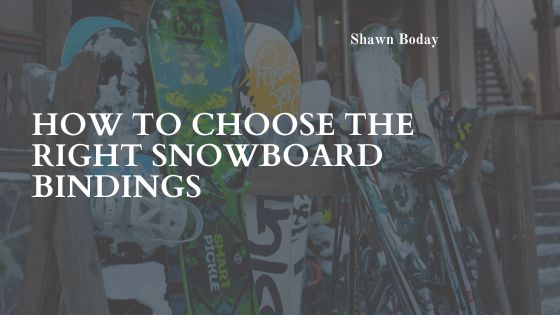When it comes to snowboarding, selecting the right bindings is just as crucial as choosing the board itself. Bindings are what connect you to the board, and they play a significant role in your control, comfort, and overall riding experience. The right snowboard bindings can improve your performance on the slopes, while the wrong ones can limit your ability to progress. In this guide, we’ll walk you through the factors to consider when choosing the right snowboard bindings.
1. Types of Snowboard Bindings
There are three main types of snowboard bindings, each designed for different riding styles and preferences. Understanding these types can help you determine which one will best suit your needs.
- Strap Bindings: The most common type, strap bindings feature two straps that secure your boots to the board. They offer a high level of adjustability and support, making them versatile for different styles of riding. Strap bindings are ideal for both beginners and advanced riders because of their comfort and customization options.
- Rear-Entry Bindings: These bindings feature a high-back that folds down, allowing you to step into the binding from the back. They are popular for their convenience and speed when getting in and out, but they may not offer the same level of precision as strap bindings.
- Step-On Bindings: This newer design allows riders to step directly into the binding without the need for straps. These bindings offer ease of use and are favored by riders looking for a hassle-free experience. However, they require compatible boots and may not be as adjustable as traditional strap bindings.
2. Flex Rating: Stiffness vs. Flexibility
The flex rating of bindings ranges from soft to stiff, and it directly affects how the bindings respond to your movements.
- Soft Flex (1-4): Soft bindings are more forgiving and allow for easier, more playful movements. They’re great for beginners and freestyle riders who prioritize flexibility and comfort over responsiveness. Soft bindings are easier to maneuver at slower speeds, making them ideal for park riding, jibbing, and tricks.
- Medium Flex (5-6): Medium-flex bindings strike a balance between responsiveness and flexibility, making them versatile for all-mountain riders. They’re a great choice for those who like to ride in various conditions, from groomed trails to off-piste terrain. Medium bindings provide a solid combination of control and flexibility for intermediate and advanced riders.
- Stiff Flex (7-10): Stiff bindings offer maximum responsiveness and control, making them ideal for high-speed carving, freeriding, and advanced terrain. They’re designed for experienced riders who want precise movements and stability. However, stiff bindings can feel less forgiving, so they may not be suitable for beginners.
3. Compatibility with Your Board and Boots
Bindings must be compatible with both your snowboard and your boots to ensure a secure and comfortable fit. Most modern bindings use one of two main mounting systems:
- Disc/Universal System: This is the most common mounting system and works with the majority of snowboards. It uses a baseplate with multiple holes that can be adjusted to fit various stance widths and angles. If you’re unsure of what bindings to choose, the universal system is a safe bet.
- Channel System: Found primarily on Burton snowboards, the channel system allows for easier stance adjustment with a sliding mechanism instead of fixed mounting points. If you own a Burton board with the channel system, make sure your bindings are compatible with this setup.
When it comes to boots, check that they fit snugly into your bindings without excessive movement. Too much space between the boot and the binding can lead to poor control, while a binding that’s too tight can cause discomfort.
4. High-Backs: Support and Control
The high-back is the vertical section of the binding that supports your lower leg and affects how well you can control your board. High-backs come in varying degrees of stiffness and height, depending on your riding style.
- Freestyle Riders: Opt for a shorter, softer high-back to allow for greater flexibility and ease of movement.
- Freeride or Carving Riders: A taller, stiffer high-back will give you more leverage and better control during aggressive turns and at high speeds.
Some bindings also offer adjustable high-backs, allowing you to fine-tune the forward lean to match your riding preferences.
5. Straps and Padding for Comfort
Binding straps are essential for comfort and security, and they vary in design based on the type of binding. Look for straps that are well-padded and adjustable. The ankle strap should offer support without cutting into your boot, while the toe strap should keep your foot locked in place without discomfort.
Padding on the baseplate, high-back, and straps can also help absorb shock and reduce foot fatigue, especially when riding for extended periods.
Conclusion
Choosing the right snowboard bindings is essential for optimizing your performance and comfort on the slopes. By considering the type of bindings, flex rating, compatibility with your board and boots, high-back design, and strap comfort, you can find a pair that complements your riding style. Whether you’re carving down steep runs or hitting the park, the right bindings will help you make the most of your snowboarding experience.

